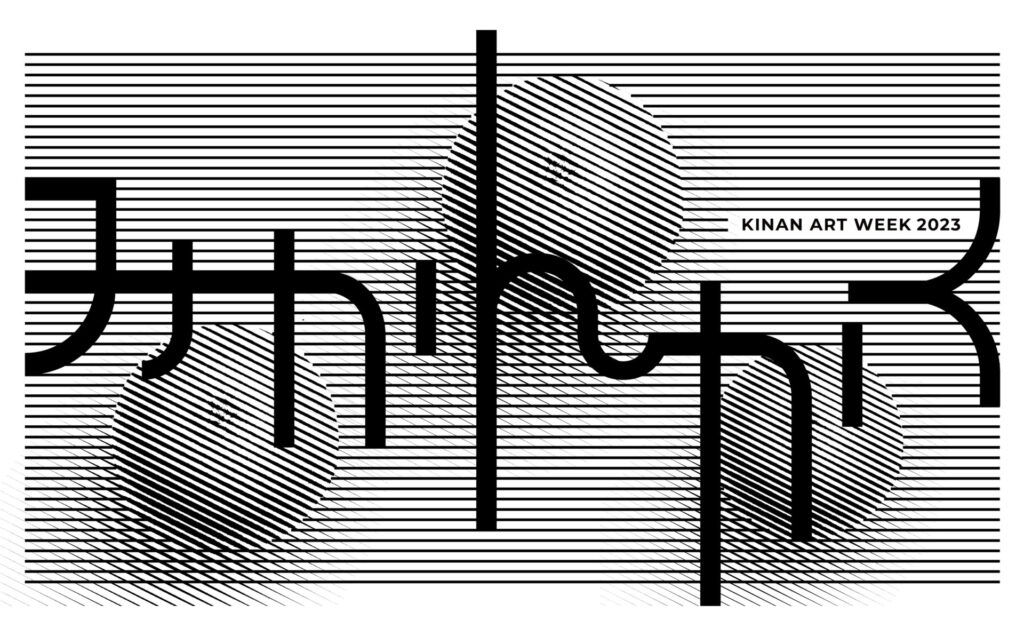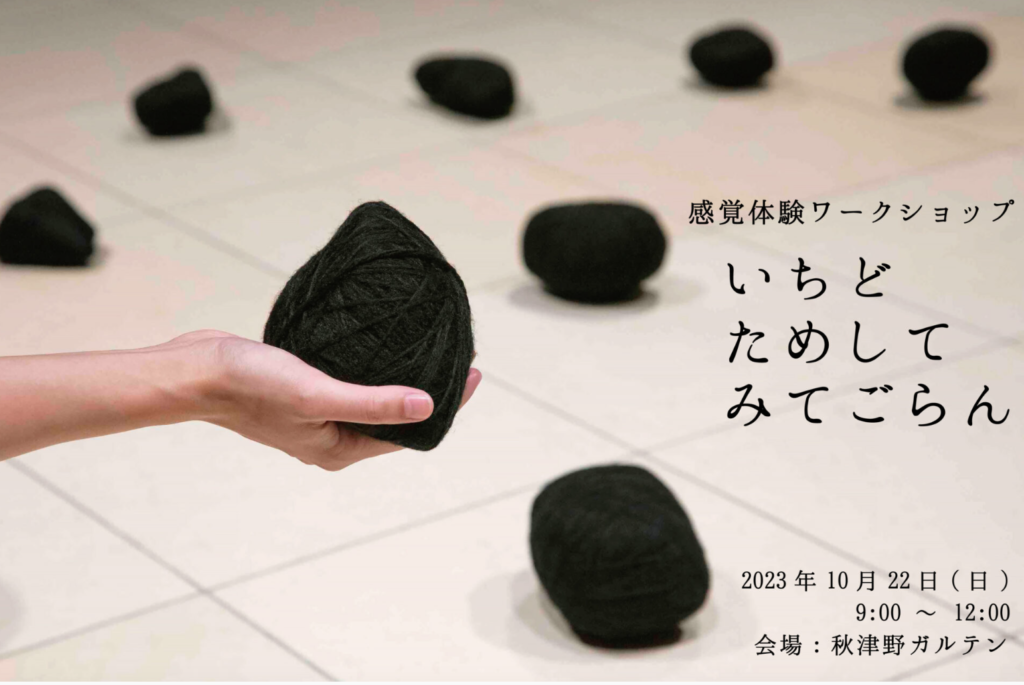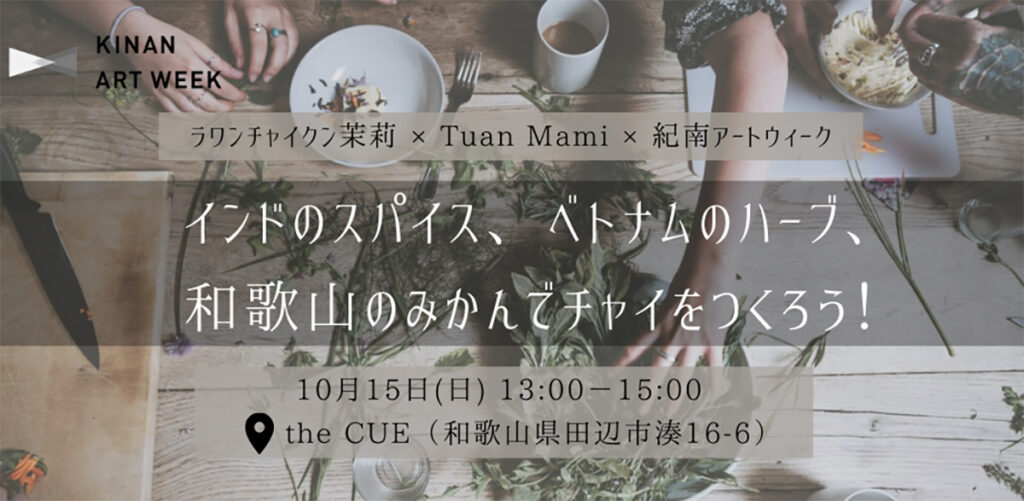Orange Collective

Sensing a Mandarin Oranges (Mikankaku):An Entangled World
6 October 2023
Kinan Art Week Yabumoto Yuto
1 What is a ‘Mikankaku’?
The term “Mikankaku” is coined by combining Mikan (mandarin oranges(蜜柑), unfinished(未完)…. ) + Sensation (sensation(感覚), space(間隔) ). This time, the exhibition will not be an exhibition of artworks, but a series of workshops and other activities that appeal to the senses of smell, taste, touch and time, using “mikan(mandarin oranges)” as a medium.
It give me this opportunity by talking with the master of Bar 99 in Shirahama. Last year, when the Master saw the notation “Feel the five senses…” at some workshop, he said, “I don’t like the word ‘five senses’. What happens to people who don’t have the ‘five senses’? Artists shouldn’t use such cruel words.” It was hard for me to get it out of my head.

2 What is ‘sense/space’ – Sight > Smell, Taste, Hearing and Touch? ―
According to the book How Do Blind People See the World (by Dr Ito Asa), 90% of the information that humans obtain relies on visual information, and art consists almost entirely of visual expression. There is a history of emphasis on the superiority of the visual in ideology and philosophy as well. In this sense, the artists featured in this exhibition, such as Hirose Satoshi for his sense of smell, Tuan Mami for his sense of taste and film director Akiko Okano for her sense of touch, have placed importance on expressions other than the visual. For example, when I stayed at Hirose-san’s home in Milan, a real orange and a sculpture of an orange were placed in the room, and it was set up in such a way that you could not distinguish between the real and sculpture oranges unless I touched, held and smelled the objects, demonstrating not only ‘sense of sight’ but also ‘sense of touch and smell’.
Also, in this “dense overlapping” place where oranges and hands touch each other, a state of “zero ‘spacing’ (or negative ‘spacing’)” is opened up. Am I the only one who gets the feeling that the separation between myself and others becomes blurred and that I am entering a state of depth? I believe that Kumagusu Minakata, a leading naturalist in Kinan region, called this state of entering the depths from “interval zero”, “Jikinyu”.
In particular, Kumagusu is said to have attached great importance to the sense of ‘tact’. According to Kumagusu researcher Karasawa Taisuke in his paper “A philosophical consideration of ‘tact’ – from the discourse of Minakata Kumagusu”, the sense of touch is the fundamental thing, and the ultimate organism that lives only by the sense of touch is “slime mold”. The ultimate organism that lives solely on the sense of touch is the “slime fungus”. Through this exhibition, why don’t you let your sense of touch operate like that of slime molds?

Workshop by artist Tomoo Hirose “Ichido tameshigorou” (Try it once)
3 ‘Eating’ and ‘Parasitism/Symbiosis’
‘Eating’ is not a gentle thing. We must not ignore the tensions that exist around food, which are parasitic and eating each other. This time, Mami-san from Vietnam is coming to Kinan, and his practices can be described as a kind of ‘shokyaku/parasitism’. According to the book Shokyaku-ron (written by Hoshino Futhoshi), a “shokyaku” is a so-called “inmate”. Like a ‘parasite’, it may be an entity that outwits its host, steals its meals and eats them with the host. Mami continues to focus on Vietnamese plants/immigrants who have been cut off from their roots, but we must continue to ‘feed’ with them by our side before we can ‘live together’. In light of Mami’s art residency and artistic practice, how can we reinterpret ‘symbiosis’ and ‘parasitism’, which are one letter apart?

4 ‘Honeydew’ and ‘Unfinished’.
Finally, as for ‘mikan/orange’, it is, of course, an extension of last year’s ‘Orange Mandala‘ exhibition. The Unfinished Genius of Kumagusu Minakata (written by Shimura Masayuki) was released just in June 2023, and the chapter ‘Orange and Shintoism and Buddhism’ in the book discusses fruit cultivation and Shintoism and Buddhism (please pick up the book to find out more about its contents). ). Dr. Shimura also questions the importance of ‘not completing’ and ‘not drawing conclusions’ based on Kumagusu’s ‘unfinished’ nature. This idea of ‘unfinished’ is becoming an important element in recent contemporary thought, philosophy, anthropology and art.
For example, thinking of the ‘community’ theory, the Italian philosopher Roberto Esposito even says that we owe a debt that can never be repaid from the stage of ‘birth’, which is a pure gift, and that this ‘unfinished state’ is the source that unites us. Perhaps the times are finally catching up with Kumagusu, the Unfinished Genus.
Now, let us embark on endless journey of ‘mikan-kaku’ with ‘mikan/orange’ as our medium this year.
